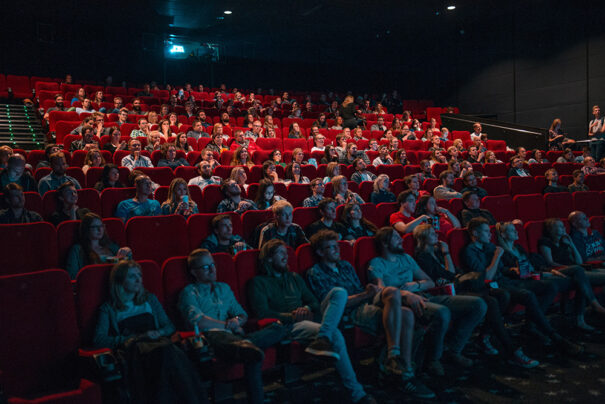El Gobierno da luz verde al anteproyecto de Ley del cine y de la cultura audiovisual que diluye fronteras entre cine y tv
Salen a la luz las líneas maestras del anteproyecto de Ley del cine y de la cultura audiovisual, aprobado en el Consejo de Ministros del día 15 de febrero.
La nueva Ley del cine se presenta como un texto que “fortalece” las industrias españolas tanto nacional como internacionalmente “adaptando la normativa” a los avances y transformaciones que ha experimentado el sector durante los últimos años.
Desde 2007, cuando entró en vigor la ley actual, y sobre todo en los últimos años, la cadena de valor ha experimentado cambios profundos. Se han incorporado nuevos contenidos y servicios de distribución, explotación y difusión, propios de un mercado global y de una sociedad caracterizada por la cultura y la economía digital. Así, la futura ley busca adaptarse a las nuevas dinámicas del sector audiovisual, creando instrumentos que respondan a las necesidades, avances y retos de creadores, industria y públicos.
Esta ley, junto con la Ley General de Comunicación Audiovisual, son reformas incluidas en el Plan de Recuperación, Transformación y Resiliencia (PRTR). Tras la ronda de contactos con representantes del sector, la norma volverá al Consejo de Ministros e iniciará su tramitación parlamentaria como Proyecto de Ley.
 Los cinco pilares de la Ley del Cine
Los cinco pilares de la Ley del Cine
La norma se fundamenta en cinco principios: el fortalecimiento y apoyo a toda cadena de valor, el respaldo a los procesos de creación en aras de la libertad, independencia y autonomía creativa, la adaptación a las nuevas tecnologías y hábitos de consumo, la defensa de la competencia y la puesta en valor del patrimonio audiovisual.
Entre las principales novedades, destaca la ampliación de las convocatorias de ayudas a toda la cadena de valor del sector audiovisual, el apoyo a la promoción internacional de todo el audiovisual, «no solo películas», y la protección del patrimonio. De ahí la nueva denominación de la ley, que suma el concepto de cultura audiovisual al del cine. También se incluye la flexibilización y clarificación de los requisitos para obtener la nacionalidad española de las obras. Se trata de una novedad “en favor de la creatividad”, al eliminar los obstáculos que los requisitos de la ley vigente suponen a la creación.
Miquel Iceta, Ministro de Cultura y Deporte, ha presentado las claves de la norma y ha defendido la política de subvenciones que ha acompañado al sector durante los últimos años: “Siempre se intenta minimizar el papel de la cultura, diciendo que es un sector subvencionado de cuatro privilegiados. Nada más lejos de la realidad, son nuestro orgullo y son un valor muy importante añadido a nuestra cultura y a nuestro patrimonio”.
 Protección del patrimonio
Protección del patrimonio
En la nueva Ley del cine y de la cultura audiovisual se incide en la importancia de la protección y difusión del patrimonio cinematográfico y audiovisual, entendiendo que el futuro pasa también por la correcta conservación y difusión del legado audiovisual de las generaciones que nos precedieron y la previsión de ir incorporando de la mejor manera las producciones nuevas a dicho legado. Se aborda de una forma más amplia, de acuerdo con la Recomendación de la Comisión de 27 de octubre de 2011, sobre la digitalización y accesibilidad en línea del material cultural y la preservación digital.
Entre las novedades al respecto, se califica la Filmoteca Española como Bien de Interés Cultural (BIC). Así, tanto sus instalaciones como sus contenidos, obtienen especial protección. Adicionalmente, se crean líneas de ayudas dirigidas a la protección del patrimonio audiovisual. Además, se recogen políticas innovadoras dirigidas tanto al acceso de las personas con discapacidad a los contenidos audiovisuales, como a la inclusión de las mismas en los puestos de trabajo de las empresas beneficiarias de ayudas. Así, se establece por ley la incorporación de sistemas de accesibilidad como requisito para acceder a las ayudas de largometrajes y distribución.
Por otra parte, se opta por un sistema de corregulación para la calificación por edades, similar al establecido para los contenidos audiovisuales en el ámbito de los servicios de comunicación audiovisual televisivos, lineales o a petición, con el fin de configurar un sistema más coherente y flexible y que se adoptará en cooperación con la Comisión Nacional de los Mercados y la Competencia (CNMC), empresas prestadoras de servicios de comunicación audiovisual y las empresas productoras, distribuidoras y exhibidoras afectadas.
 Consejo Estatal y plan estratégico
Consejo Estatal y plan estratégico
La nueva norma contempla la creación del Consejo Estatal de la Cinematografía y la Cultura Audiovisual. Su objetivo es el diálogo, la comunicación y la cooperación en el ámbito de la cinematografía y la cultura audiovisual entre todos los implicados, incluyendo comunidades autónomas, administraciones públicas y el sector. El consejo abordará cuestiones de políticas públicas, alfabetización audiovisual o patrimonio, entre otras.
De la misma manera, se establece la obligación de elaborar y publicar un plan estratégico para la cinematografía y la cultura audiovisual cada 4 años, así como informes anuales sobre las medidas impulsadas y sus resultados y las estadísticas y estudios sobre la actividad del sector que se estimen necesarios y de interés para la ciudadanía.
El objetivo de la ley es perdurar en el tiempo. Por eso, deja abierto el desarrollo posterior de varios detalles normativos, de forma que se puedan adaptar año a año sin necesidad de cambiar la ley. La ley determina que éstas se alinean con los criterios europeos en materia de ayudas estatales y con las líneas estratégicas del programa MEDIA de Europa creativa. De esta manera, se modernizan para adaptarse a la realidad del audiovisual y apoyar la creación en todas sus fases, y la promoción tanto dentro como fuera de España.
Ayudas más específicas
Las ayudas de la nueva Ley del cine y de la cultura audiovisual buscan apoyar el fortalecimiento de toda la cadena de valor (no solamente la producción, entendiendo el audiovisual en toda su riqueza y diversidad), y se incorpora a la promoción internacional todo el audiovisual en su conjunto, y no solamente el cine.
Entre otras novedades, incorpora la necesidad de que las ayudas valoren de forma transversal en todas sus convocatorias el fomento de la igualdad de género, la sostenibilidad e impacto ambiental, la contribución a la transición digital y la incorporación de medidas de accesibilidad universal.
También amplía el campo de posibles ayudas y subvenciones con nuevas convocatorias, como son las dirigidas a patrimonio audiovisual, a laboratorios de desarrollo o formación, entre otras. Se crean además nuevas ayudas para promover la diversidad a través de la distribución de películas de difícil difusión en espacios alternativos o en internet y ayudas a la distribución internacional.
Un sector estratégico
El sector audiovisual y cinematográfico es una de las palancas del Plan de Recuperación, Transformación y Resiliencia (PRTR) que, además de las reformas regulatorias, contempla entre sus objetivos aumentar la producción audiovisual en España un 30%. Para ello, prevé la movilización de 1.603 millones de euros y reforzar el posicionamiento de España como hub audiovisual de Europa. En el marco de actuación del Plan España Hub Audiovisual (Spain AVS Hub), a través del ICEX se ha puesto en marcha una ventanilla única, Spain Audiovisual Bureau, dotada con 20 millones de euros, para acompañar a las empresas audiovisuales españolas en su internacionalización, así como a las empresas extranjeras que deseen rodar en España. En esta línea, también se ha lanzado el proyecto Spanish Screening XXL, con una dotación de 4,8 millones de euros para ampliar los contenidos y atraer inversores en los festivales de Málaga y San Sebastián y desarrollar una plataforma virtual de promoción y negocio.
Asimismo, las ayudas al sector que convocará el Ministerio de Cultura y Deporte también se verán reforzadas este año con los fondos europeos, hasta alcanzar un total de 101,7 millones de euros. En concreto, serán 22,9 millones de euros procedentes del Plan de Recuperación, Transformación y Resiliencia (PRTR) los que se destinarán a respaldar al cine y el audiovisual, repartidos entre las nuevas “Ayudas para laboratorios e incubadoras de creación y desarrollo de proyectos audiovisuales” (9 millones de euros), las “Ayudas a la distribución internacional” (3 millones de euros), las “Ayudas a la participación en eventos audiovisuales internacionales» (500.00 euros) y Spanish Screenings XXL (2,05 millones de euros).
Los fondos también contribuyen a reforzar algunas ayudas existentes: 8 millones de euros para las “Ayudas a la producción de largometrajes” (de un total de 68 millones de euros), con el objetivo de impulsar tanto las obras dirigidas por mujeres como la animación, por su contenido tecnológico y digital; y 350.000 euros para la digitalización y sostenibilidad de los festivales en las “Ayudas a la organización de festivales” (de un total de 1,355 millones de euros). A los distintos programas de ayudas se añaden otras inversiones con cargo a los fondos del mecanismo de recuperación como la aplicación de análisis de datos, el desarrollo de una nueva línea para la creación digital en Ibermedia o el desarrollo de una plataforma de contenidos audiovisuales.
¿Te gustó este artículo?
Suscríbete a nuestro NEWSLETTER y no te perderás nada.



